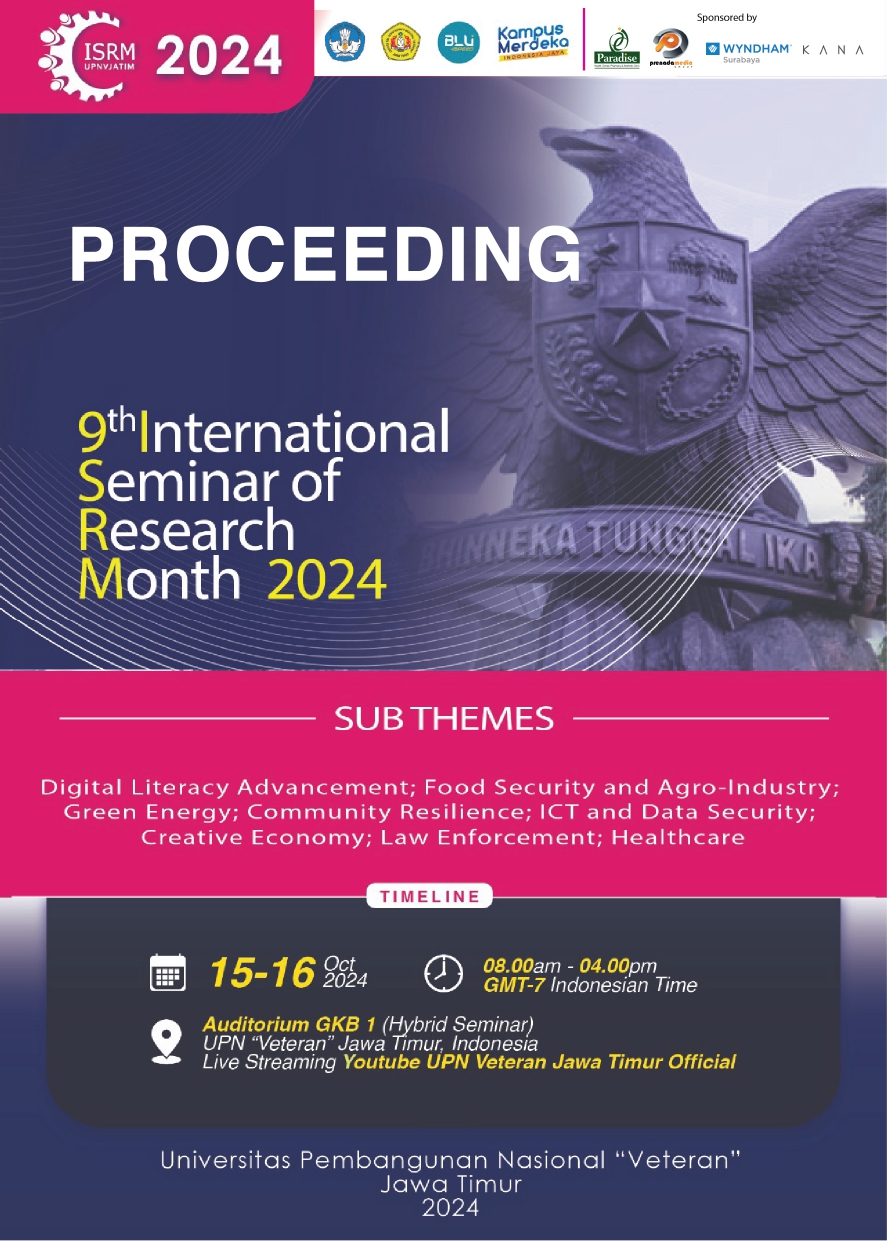Socialization of Organic Catfish Cultivation in Tarpaulin Pond to Improve Community Income in Tambakrejo Village, Gurah District, Kediri Regency
DOI:
https://doi.org/10.11594/nstp.2025.4749Keywords:
Catfish, household income, and farmers groupAbstract
Organic catfish cultivation in the "Tani Manunggal" Farmer Group, Tambakrejo Village, Gurah District, Kediri Regency is carried out independently by the community. The problems often faced by the community are the lack of land and the growth of catfish in earthen ponds. Therefore, an easy way to farm organic catfish is to use tarpaulin ponds. Based on these problems, the community service team proposed efforts to empower group farmers to obtain organic catfish cultivation in tarpaulin ponds. The method used in this service is a qualitative descriptive method through discussion, counseling, training, and direct evaluation with organic catfish farmers. The results of the socialization regarding the use of closed ponds have been well received by the community of Tambakrejo Village, Gurah District, Kediri Regency, without obstacles and by the expected goals, where the response and enthusiasm of the "Tani Manunggal" group farmers are very positive. Organic catfish cultivation with a tarpaulin system is a system of utilizing limited land to generate additional income in addition to the main job as a helper, farmer, and so on.
Downloads
References
Darmansah, A., Sulistiono, N. T., & Supriyono, E. (2016). Pemberdayaan masyarakat melalui pengembangan budidaya ikan lele dumbo di desa Balongan, Indramayu, Jawa Barat. Agrokreatif Jurnal Ilmiah Pengabdian kepada Masyarakat, 2(1), 8-16.
Hudaidah, Wardiyanto, S., Hasani, Q., & Yusup, M. W. (2017). Pemberdayaan masyarakat melalui pengembangan budidaya ikan lele teknologi bioflok di kelurahan Pinang Jaya, Bandar Lampung, Lampung. Jurnal Pengabdian kepada Masyarakat, 17.
Iswanto, B., Suprapto, & Rommy. (2014). Petunjuk teknis budidaya ikan lele mutiara. Sukamandi, Jawa Barat: Balai Penelitian Pemuliaan Ikan.
Joshi, A., Kale, S., Chandel, S., & Pal, D. K. (2015). Likert Scale: Explored and Explained. British Journal of Applied Science & Technology, 7(4), 396-403. doi:10.9734/BJAST/2015/14975
Nasution, S. K., Rahmanta, & Manurung, V. R. (2024). Pelatihan budidaya ikan lele pada kolam terpal dalam rangka meningkatkan pendapatan masyarakat di desa Sei Semayang Kecamatan Sunggal Kabupaten Deli Serdang. BERNAS: Jurnal Pengabdian kepada Masyarakat, 5(1), 379-386. doi:DOI: https://doi.org/10.31949/jb.v5i1.7716
Nugroho, B. D., Hardjomidjojo, H., & Sarma, M. (2017). Strategi pengembangan usaha budidaya ikan konsumsi air tawar dan ikan hias air tawar pada kelompok Mitra Posikandu Kabupaten Bogor. Manajemen IKM, 12(2), 127-136.
Sahribulan, Sugianto, Fitri, A. E., & Kurnia, N. (2022). Pelatihan budidaya ikan lele dengan metode kolam terpal di SMKN-PP Rea Timur. Jurnal Abdimas Patikala, 1(4), 277-281.
Triyanti, R., & Shafitri, N. (2012). Kajian pemasaran ikan lele dumbo (Clariasn Sp.) dalam mendukung industri perikanan budidaya (studi kasus di Kabupaten Boyolali, Jawa Tengah. Jurnal Sosial Ekonomi Kelautan dan Perikanan, 7(2), 177-191.
Wardiningsih, S. (2014). Teknik pembenihan ikan. In: Prasarana dan Sarana Pembenihan Ikan. Jakarta: Universitas Terbuka.
Downloads
Published
Conference Proceedings Volume
Section
License

This work is licensed under a Creative Commons Attribution 4.0 International License.
Authors who publish with this proceedings agree to the following terms:
Authors retain copyright and grant the Nusantara Science and Technology Proceedings right of first publication with the work simultaneously licensed under a Creative Commons Attribution License that allows others to share the work with an acknowledgement of the work's authorship and initial publication in this proceeding.
Authors are able to enter into separate, additional contractual arrangements for the non-exclusive distribution of the proceedings published version of the work (e.g., post it to an institutional repository or publish it in a book), with an acknowledgement of its initial publication in this proceeding.
Authors are permitted and encouraged to post their work online (e.g., in institutional repositories or on their website) prior to and during the submission process, as it can lead to productive exchanges, as well as earlier and greater citation of published work (See the Effect of Open Access).










